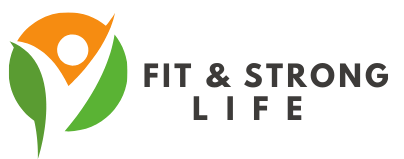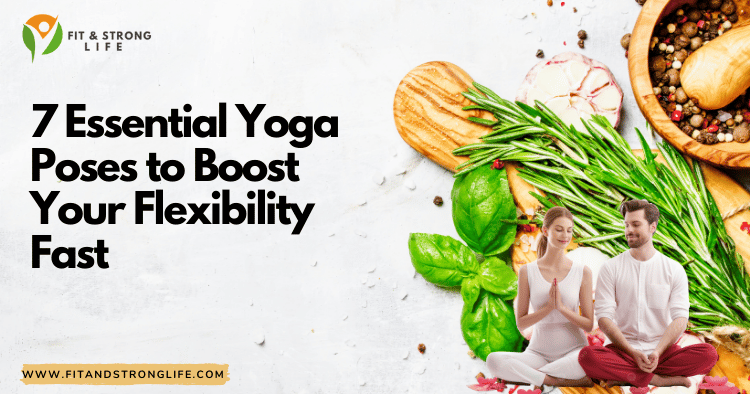Table of Contents
- Introduction
- Why Flexibility Matters
- 1. Downward Facing Dog
- 2. Cat-Cow Stretch
- 3. Seated Forward Bend
- 4. Butterfly Pose
- 5. Pigeon Pose
- 6. Lizard Pose
- 7. Bridge Pose
- Frequently Asked Questions
- Conclusion
—
Introduction
If you’ve ever watched a yoga class or seen someone effortlessly bend into a pretzel shape, you might have wondered how they got there. The secret lies in flexibility, a crucial component of overall physical health. In this article, we’ll explore seven essential yoga poses designed to enhance your flexibility quickly and effectively. Whether you’re a beginner or an experienced yogi, these poses can help you stretch and strengthen your body.
—
Why Flexibility Matters
Flexibility is more than just being able to touch your toes; it plays a vital role in overall fitness and well-being. Here’s why you should prioritize flexibility:
- Injury Prevention: Increased flexibility reduces the risk of injuries during physical activities.
For additional insights on nutrition that supports injury prevention, explore our Top 10 Essential Supplements for Optimal Fitness 2024.
- Improved Posture: Stretching helps align your body and improves your posture, reducing back pain.
- Enhanced Performance: Flexibility can improve your performance in sports and daily activities by allowing for a greater range of motion.
- Stress Relief: Many yoga poses promote relaxation, helping to alleviate stress and anxiety.
For more detailed information on the benefits of flexibility, check out this Harvard Health article.
—
1. Downward Facing Dog
How to Do It:
- Start on your hands and knees in a tabletop position.
- Tuck your toes and lift your hips towards the ceiling, forming an inverted V-shape.
- Keep your hands shoulder-width apart and your feet hip-width apart.
- Press your heels toward the ground and relax your neck.
Benefits:
Downward Facing Dog stretches the hamstrings, calves, and shoulders, promoting overall body flexibility. It also energizes the body and can relieve tension.
—
2. Cat-Cow Stretch
How to Do It:
- Begin in a tabletop position.
- Inhale, arch your back, and look up (Cow Pose).
- Exhale, round your back, and tuck your chin to your chest (Cat Pose).
- Repeat for several breaths.
Benefits:
This dynamic stretch increases spinal flexibility and opens the chest, which can alleviate stiffness from sitting or standing for long periods.
3. Seated Forward Bend
How to Do It:
- Sit with your legs extended in front of you.
- Inhale and raise your arms overhead.
- Exhale, hinge at your hips, and reach forward toward your toes.
- Hold for 30 seconds to a minute.
Benefits:
This pose stretches the spine, hamstrings, and lower back, helping to enhance overall flexibility and calm the mind.
4. Butterfly Pose
How to Do It:
- Sit on the floor and bring the soles of your feet together.
- Let your knees fall outward and hold your feet with your hands.
- Inhale and lengthen your spine; exhale and gently press your knees toward the ground.
Benefits:
Butterfly Pose opens the hips and groin, areas that often become tight due to prolonged sitting.
5. Pigeon Pose
How to Do It:
- Start in a tabletop position. Bring your right knee forward to your right wrist.
- Extend your left leg straight back behind you.
- Lower your torso over your right leg, resting on your forearms or extending your arms forward.
- Hold for 30 seconds, then switch sides.
Benefits:
Pigeon Pose targets the hip flexors and glutes, providing a deep stretch that can release tension and improve hip flexibility.
6. Lizard Pose
How to Do It:
- Start in Downward Facing Dog.
- Step your right foot outside of your right hand.
- Lower your hips and keep your back leg extended.
- You can stay on your hands or drop down to your forearms for a deeper stretch.
Benefits:
This pose opens the hips and groin, enhancing flexibility and preparing the body for more challenging poses.
7. Bridge Pose
How to Do It:
- Lie flat on your back with your knees bent and feet hip-width apart.
- Press your feet into the ground as you lift your hips toward the ceiling.
- Hold for 30 seconds while squeezing your glutes and engaging your core.
Benefits:
Bridge Pose strengthens the back, opens the chest, and stretches the spine and hip flexors, promoting overall flexibility.
Frequently Asked Questions
How often should I practice yoga for flexibility?
For optimal results, aim to practice these poses at least 3-4 times a week. Consistency is key!
Can yoga help with tight muscles?
Absolutely! Yoga is excellent for releasing tight muscles and improving range of motion.
Do I need to be flexible to start yoga?
Not at all! Yoga is for everyone, regardless of flexibility. These poses can help you become more flexible over time.
How long should I hold each pose?
Begin by holding each pose for 30 seconds and gradually increase the duration as you become more comfortable.
For more information on yoga practices, you can visit Yoga Journal.
Conclusion
Incorporating these seven essential yoga poses into your routine can significantly enhance your flexibility in a short period. Remember, the journey to flexibility is a personal one, and everyone’s body is different. Listen to your body, be patient, and enjoy the process. Happy stretching!
Also Look For
To further support your flexibility and overall fitness journey, consider reading about Top 7 Pre-Workout Foods for Optimal Performance and Top 10 Essential Vitamins and Minerals for Fitness Gains.
These resources will provide additional insights into how nutrition and exercise synergy can boost your flexibility and performance.




